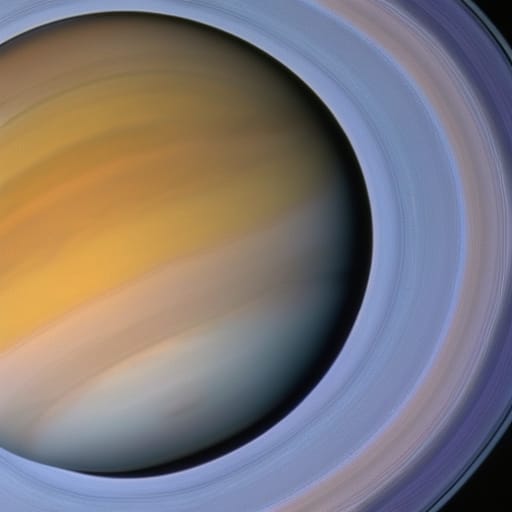Space: Saturn

Saturn is the sixth planet from the Sun and the second-largest in our solar system, known for its stunning rings and unique features. Here are the important aspects of Saturn:
Distance and size: Saturn is located about 1.4 billion kilometers (869 million miles) from the Sun. It has a diameter of approximately 116,460 kilometers (72,365 miles), making it more than nine times wider than Earth.
Composition: Saturn is a gas giant, primarily composed of hydrogen (about 96%) and helium (about 3%). Like Jupiter, it lacks a solid surface, and its atmosphere transitions gradually into a metallic hydrogen layer and then into a solid core.
Orbital and rotation period: Saturn takes roughly 29.5 Earth years to complete one orbit around the Sun. Its rotation period is approximately 10.7 hours, similar to Jupiter's, which also gives it an oblate shape.
Temperature: Saturn's upper atmosphere has an average temperature of about -178°C (-288°F). However, the temperature increases with depth, reaching several thousand degrees Celsius in the metallic hydrogen layer and the core.
Surface features: Saturn's atmosphere is characterized by pale yellowish bands, which are less distinct than Jupiter's. These bands are created by ammonia ice clouds and are influenced by the planet's zonal winds. Saturn also has occasional storms, the largest of which is known as the Great White Spot.
Rings: Saturn's most striking feature is its complex system of rings, composed primarily of ice particles and dust with traces of rocky material. The rings extend up to 282,000 kilometers (175,000 miles) from the planet but are only about 20 meters (65 feet) thick on average.
Magnetic field: Saturn has a substantial magnetic field, although it is weaker than Jupiter's. The magnetic field is generated by the motion of metallic hydrogen in its interior and results in a large magnetosphere.
Moons: Saturn has at least 83 known moons, the largest of which is Titan, the second-largest moon in our solar system. Titan has a thick atmosphere and is known to have lakes and rivers of liquid hydrocarbons, such as methane and ethane. Enceladus, another moon of Saturn, has a subsurface ocean and is considered a potential candidate for hosting microbial life.
Exploration: Saturn has been studied by several spacecraft, most notably the Pioneer, Voyager, and Cassini missions. The Cassini spacecraft orbited Saturn from 2004 to 2017, providing a wealth of information about the planet, its rings, and its moons.
Observing Saturn: Saturn is visible from Earth with the naked eye and appears as a bright, yellowish point of light. When viewed through a telescope, its stunning rings and some of its larger moons become visible.
Mythology: Saturn is named after the Roman god of agriculture and time. In Greek mythology, the planet was associated with Cronus, the father of Zeus and ruler of the Titans. The association with agriculture is fitting, as Saturn's pale yellow color is reminiscent of golden fields of wheat.